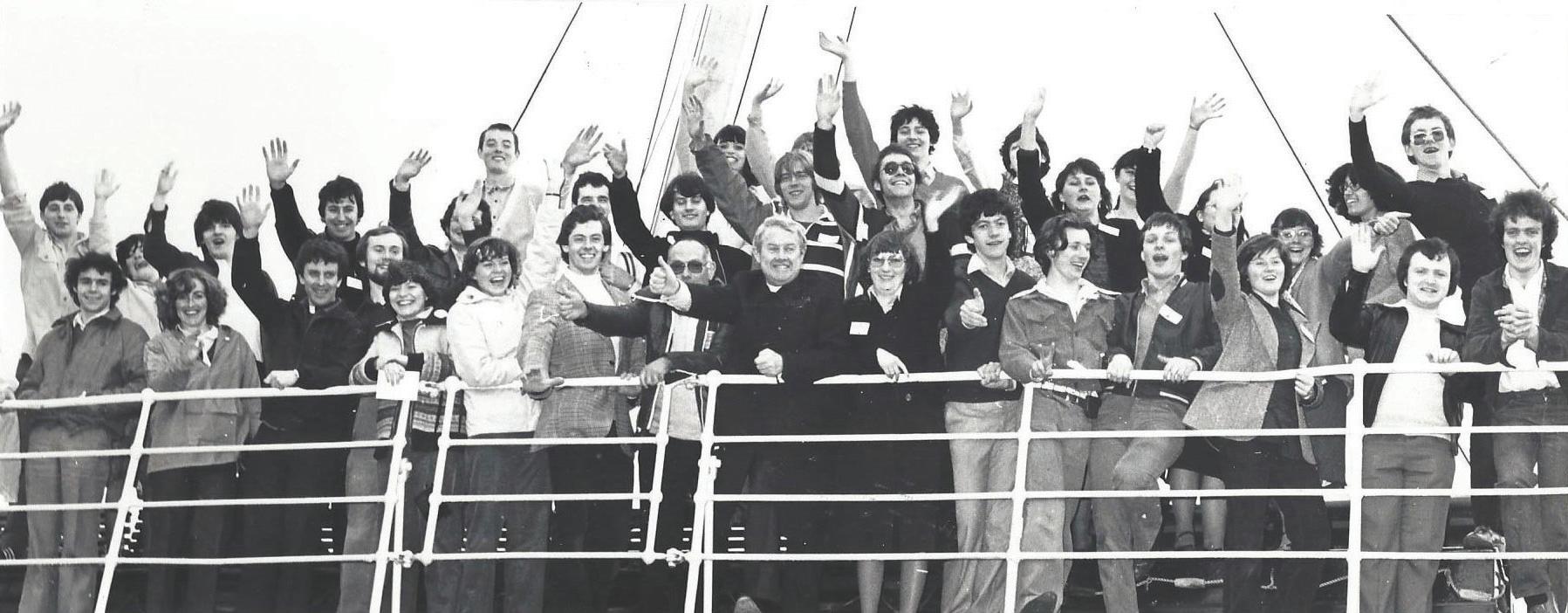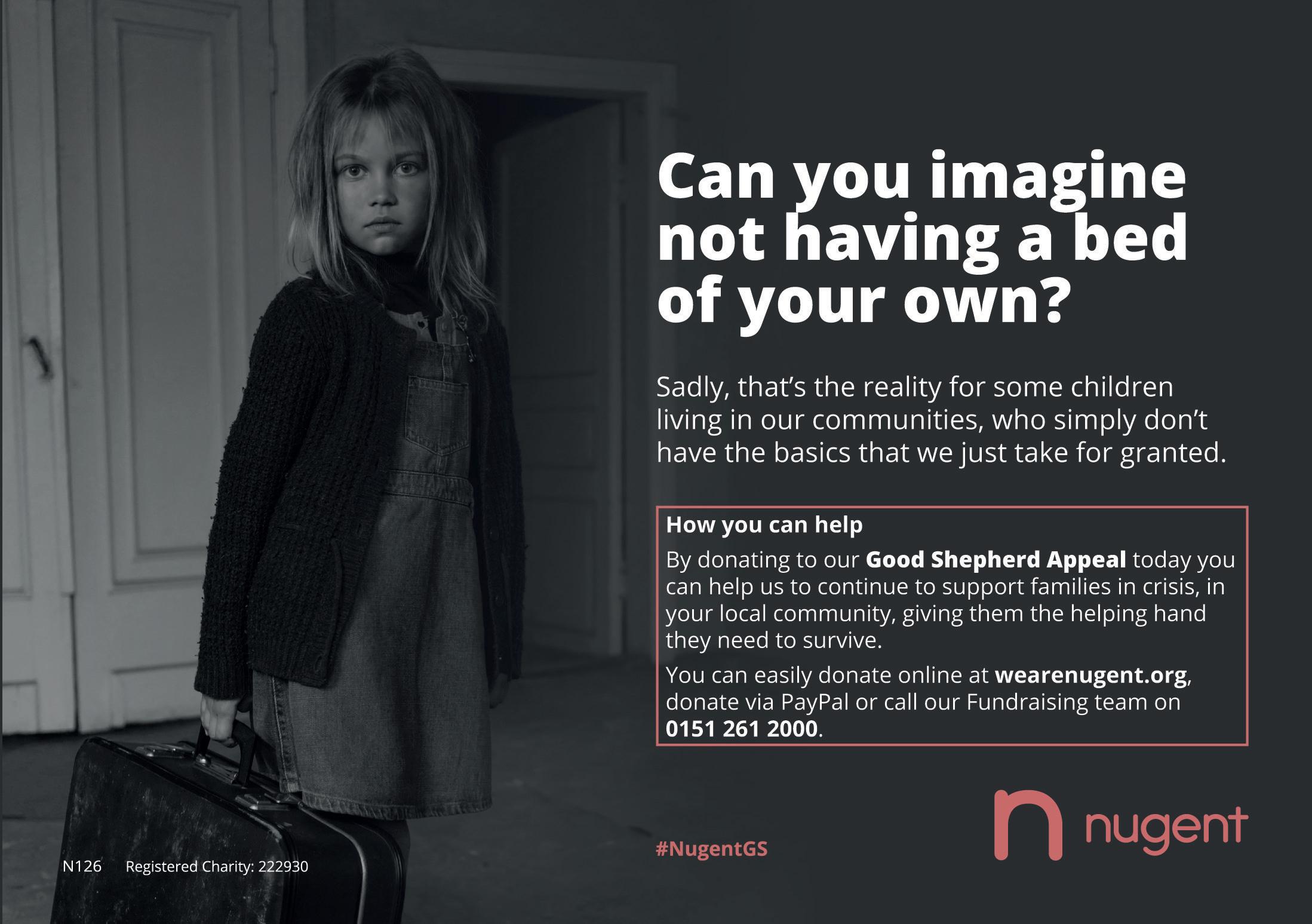
9 minute read
Main Feature
Remembering May 1980
Advertisement
By Pat Jones, a member of the Congress National Committee in 1980
Forty years ago this month, the Catholic community of this Archdiocese provided an amazing feat of hospitality. The National Pastoral Congress took place from 2nd to 6th May 1980, and has never been repeated. Around 2,000 people took part in this five-day conference, including 200 local delegates. All those who came, representing parishes, lay organisations, religious communities and chaplaincies, stayed in the homes of Liverpool Catholic families. As hosts, the people of this diocese provided all that was needed to make the Congress work.
This was a stunning piece of generosity and organisation. The local organising committee drew deeply on the strengths of the diocese at that time. The wellorganised groups of the UCM, the CWL and others were crucial. So too were our schools. Six Catholic secondary schools around the city, and what was then Christ’s College, now Liverpool Hope University, provided the venues. The great opening and closing liturgies were in our Cathedral, and the final plenary session took place in the Philharmonic Hall. Around the Congress, the ‘fringe’ of concerts, exhibitions, musical events and a floating disco cruise on the Royal Iris for the youth delegates, all celebrated Liverpool’s strengths.
In one of the special editions of the daily newspaper provided for the Congress by Catholic Pictorial staff, a delegate from London was interviewed. Michael Whyte is reported as saying ‘There seems to be so much enthusiasm among everyone I’ve met. I don’t think Londoners would have reacted in the same generous way as the people of Liverpool. They have opened their hearts to us as well as their doors’.
It is hard to imagine this happening today. People would want en-suite rooms, and their own cars. In 1980, all the diocesan coaches arrived at Burtonwood Services on the M62, where the local organising chief, Michael Sampson, ensured they were decanted onto other coaches taking them across the city to their local venues. Bishops travelled with their delegates and participated alongside everyone else. The leadership at every level was in the hands of collaborative teams of laypeople, priests, religious and bishops, with laypeople in the majority.
community here was vital as a backdrop and support system for an event that is still a landmark in the life of the Church in England and Wales. It took place just 15 years after Vatican II, when we were just beginning to understand its teaching. Cardinal Hume spoke about the Congress as a way to ‘absorb the lessons of the Second Vatican Council and put them into practice’. It was only two years since John Paul II had been elected pope, bringing fresh energy and generating excitement and hope. Cardinal Hume himself had only been at Westminster for four years, and Archbishop Worlock had come to Liverpool around the same time. The city of Liverpool was yet to endure the difficulties and painful experiences of the decade ahead. Mrs Thatcher had just been elected.
The Congress was not just the six days in Liverpool. In the two years beforehand, there was consultation in which every member of the Catholic community was invited to take part. Eight discussion leaflets were widely circulated and diocesan reports were drawn up. Delegates were elected, proportionately according to the mass-going population in each place. Over 100,000 replies to a survey about priority themes were received. Dioceses held local meetings of their delegates before they came to Liverpool. Throughout the preparation, and in the Congress itself, prayer was a
Archbishop Worlock lights the Congress Candle held by the youngest delegate
vital element, as were the magnificent liturgies.
In many ways, the Congress was an experience that parallels the current Synod process in this Archdiocese. It was a process in which we were learning how to reflect and form views together about the path ahead that we should take as a Catholic community. We were not familiar with the idea of synodality then, but looking back, it feels accurate to describe it in these terms.
For many laypeople, it was an amazing experience of feeling that our voices mattered, and our collaboration was welcomed. There were diverse views of course, but even sensitive issues were explored. The reports and resolutions, as well as the voting figures, were all public.
Afterwards, as the high notes of the Liverpool experience slipped into memories, the inevitable challenges came. Talking about the renewal we desire and the mission we dream of accomplishing doesn’t make it happen. It is a daily task, involving everyone, to seek the change we reach for when we set a fresh vision. A few months after the Congress, the bishops published a reflective response called ‘The Easter People’. In the first year or two, there was perhaps some puzzlement, some sense that what we had discussed should now be happening. It’s never that simple. The Congress was not a parliament, even though we made resolutions and voted. It was more like a pilgrimage, a journey of conversion, in which we see new possibilities. Undoubtedly there were changes that happened as a result of the Congress. It led to the process by which the Catholic Church became fully part of ecumenical bodies for example. But the larger effect was in spreading and validating many of the practices we now take for granted: more lay ministries; more pastoral work in support of marriage and the family; more attention to how we share our faith with others; and more confidence in our public social mission.
The Congress taught us that we could be a synodical Church. I recall how easily bishops, priests, religious and laypeople listened deeply to each other, on equal terms. In the years following the Liverpool Congress, many dioceses organised similar processes locally, usually building up to a diocesan assembly. Part of the purpose in any process of this kind is to seek practical outcomes, changes we can make. But change doesn’t happen in the Church just because a resolution is passed. We have to work for the outcomes we hope for.
At the closing Mass, Cardinal Hume spoke about the Holy Spirit. He said ‘We might have expected that we would have heard the sound of a mighty wind and have seen descending on our heads tongues of fire. It can be thus, but it is rarely so. Most often the coming of the Holy Spirit is more akin to the gentle breeze which refreshes and enables as we toil and sweat, using the gifts and talents given to us by our father. And yet – I cannot refrain from saying this – his presence has, I believe, been sensed by us all, and in a quite remarkable way’.
The Liverpool Congress of 1980 deserves to be remembered and celebrated. It was a great gift from Liverpool Catholics to the wider Church. It is impossible to imagine it could have been done anywhere else quite so well. It was where we discovered much more than we knew about the kind of Church we could be. Undoubtedly there were critics, and there are debates about its legacy still to explore. But as Liverpool Archdiocese yet again treads the pilgrimage path of a Synod process, it is a memory of which we can be proud.

Above: Bishop Anthony Hitchen with young delegates on the Royal Iris Below: Members of the local organising people at the thanksgiving Mass following the Congress
A personal note

I had the privilege of being a member of the Congress National Committee. At 22, I was the youngest member and very green. Now, after many years working in this diocese then at the Bishops Conference and in Catholic charities, I look back with great gratitude. I recognise that I am biased in favour of the value of the Congress. Nevertheless, I hope to do some research to build a fuller and objective picture of what it meant. Part of this involves asking whether others can remember the Congress, and if so, how you see its significance. If you have any relevant memories, or would be interested if further research does happen, please email me at pastoralcongress@gmail.com
by Joanne Wallace Pastoral Associate for the Parish of St. Marie’s Our Lady of the Annunciation and Saint Bernadette and St. Teresa’s, Upholland
‘Pray Through Play’ is a new initiative which has been launched in the Upholland Pastoral Area to engage our families with young children at home during the current lockdown. With families unable to connect with their parish community and with time to fill at home, there is a need to support our parents in sustaining faith in the home and still feeling connected with their fellow parishioners. During this crisis, some parishes are just discovering that social media is a great way to connect and share as a community but this is something that we had already begun to develop at St Teresa’s and St Marie’s and St Bernadette’s through the use of Facebook and Twitter. With these in place, it has made it an obvious place to share weekly ‘Pray Through Play’ videos. The purpose of the videos is to provide parents with short, fun activities which are related to each week’s Gospel or liturgical season. These activities should be accessible, make use of resources likely to be in the home and be creative. By encouraging parents to spend time with their children on a faiththemed activity, we hope to convey the message that family time can be a form of prayer too and offers opportunities to open a conversation about faith in a fun and relaxed way. To help provide ideas and activities, I have enlisted the help of Children’s Liturgy Catechists across the parishes too. This is a great way of sharing the wealth of experience our catechists have and to make links between parishes. The long-term aim is to continue this after lockdown and for catechists to take ownership of the

project themselves, although some are a little camera shy at the moment. It has been wonderful to have parishioners sending in photographs of their creations at home which have been shared with the wider community. St Teresa’s school sent a video of their version of Lego Holy Week and we have even discovered a future TV presenter in one of our pupils from St Marie’s School, who scripted and delivered her own ‘Pray Through Play’ video for us. For videos follow: facebook/jointparishes, facebook/stteresasupholland or twitter @StMStB They are also available via https://thegodwhospeaks2020.org.uk/ Family Resources










